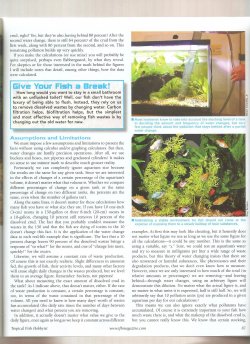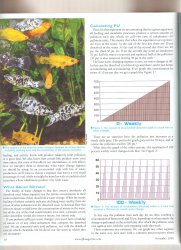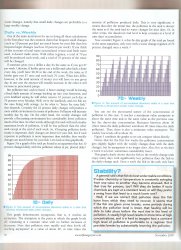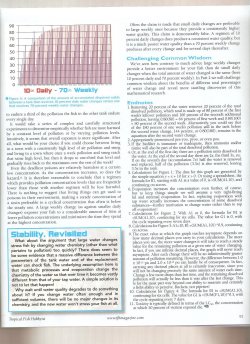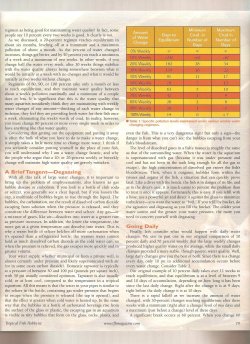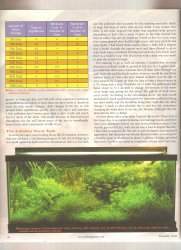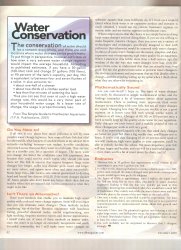I wasn't going to stay in this discussion, but there are a couple things here.
There is no reason to quit. I actually enjoy debating the merits of X vs Y, and I have no problem when someone disagrees with me. I either reinforce my ideas, and impart knowledge, which is awesome, or I was wrong, and I walk out of a conversation smarter than I walked in, and that doesn't suck either. My problem was the way you conveyed your disagreement. If you don't get what I am saying ask, I can be vague at times, and I can mistype stuff too, I am not perfect and am usually typing here while wrangling two toddlers...Our disagreement started because you asserted I have a wait till things get bad before work approach, and I am completely the opposite.
Some of your conclusions/suppositions above are certainly valid and with merit, but a couple are not. If you read the article I took the trouble to scan, you will easily see them. For the summary, the difference between doing 10% daily and 70% once a week is considerable. But if you can manage 40-50% two or three times a week, as you seem to suggest, that is even better, no argument there. But I suspect most members here are not prepared for that sort of regime, and if they can manage one day a week, then it needs to be significant as the benefit is worth it.
I read the first one, I haven't had the chance to read the second yet, so all my comments are based on just the first article.
First, I think the author notes points for both of us, second, I have a problem with some of his math, I will get to that.
Third, I don't think one large change a week is inadequate, I am not opposed to it, but I do think there is a better way (and no, 10% per day as described isn't it, but I will make that work later in the post) I do agree multiple changes aren't for everyone, but if you can, I believe there is merit.
The other thing the article debunks is the matter of stability being less with major changes. No one can really argue that forcing our fish to live in more polluted water is better for them. Parameters need to be similar, agreed.
I would not use the word "debunk" here. The author absolutely agrees that fish can be shocked if parameters are different between tank and source water (Stability Revisited insert) I agree that higher levels of pollution are bad, but I think when we examine his math we will find even his 10% example isn't as far from the 70% per week as he says, perhaps not significant enough to worry.
But parameters should not be changing with water changes. It is the "bad" stuff we want to reduce, as much as possible. And the argument is made in the article that allowing fish longer exposure to pollutants is not better for them than removing a larger percentage at one time.
Agreed, our crappy test kits should not be definitive in parameter changes pre/post water change. I do believe with the average stocking if you only do one large change a week you will see a change, not enough to "shock", but enough I see room for improvement. I have seen though extreme cases where tanks had no water changes for months, then there were problems (ich and in some cases death) when a big water change was done. Were talking nitrates off the charts though, but I think important to note stress can and does happen even when conditions are markedly better, because they are also markedly different.
Fish exposed to any toxin including nitrate and pollution will recover better the sooner they are clear of it. Fish do not acclimate to poor water quality; they tolerate it for a time maybe, which is a very different thing. But we should not expect them to do that, nor view it as "OK" regardless.
We aren't opposed here either. Hardy species will live in conditions far worse than I ever allow mine to get, but it doesn't make it right just because its possible.
You mention soil substrate...that is your ammonia and possibly nitrate issue. I don't know how long this tank has been set up, but ammonia spikes during the first six months can be significant. I won't mess with soil because I value my fish more than plants; all my tanks are planted, but the plants have to adjust to the needs of the fish. There is no nutrient value in soil over plain sand other than the CO2 initially, so I could never see it worth the risks.
I've had fish as pets since I was 8, been taking care of them myself since I was 13, so 30 years now. Plants I started with about 18 months ago. I too value my fish (a few over 10 years old) more than my plants. I saw a lot of people having seemingly effortless success with dirted tanks, but I am less than enthused with mine, and am considering ripping everything out and trying root tabs in plain sand. Too much algae, these weird ammonia releases, lots of particulate in the water...not a fan at the moment. Keeping my parameters where I like them for the fish seems to remove too many nutrients for the plants.
Now, onto my issues with the article. Firstly I am not sure what he was getting at with the tetras in a 150 vs Oscars in a 10, if he wanted to pound home that percentages are equal, there are better ways. I have a feeling some people may pick up TFH with their new tank at PetSmart and think its ok to put Oscars in a 10 gallon, not a smart example and really not helping make his point.
I am suspect of the author's math, he seems to pick variables that support his argument when there seems to be no scientific or mathematical need to choose them.
Using his own analogy of equating his PU, or pollution units to one dollar per day, his math was way off. He stated in the article that pulling 10% of the pollutants per day equates to only 10% of the daily deposit. He has the readers believing that at the end of the week, only 70 cents worth of suspended pollution was removed, while 7 dollars worth was added at one dollar per day.
That's not how the mechanics of water changes work though. If you are changing 10% of the water each day, then you are also removing 10% of the total suspended pollutants per day. So that first day, he's right, the fish add a dollar, we take a dime. However on day 2, the fish added their dollar to the 90 cents we left, but we're not taking a dime, we're taking 19 cents, or 10% of the total, which is 1.90 At the end of the week he had 6.30 left out of 7, but if you extrapolate the math you actually have 4.68, much much closer to the 3 you have left if you just did a 70% change at the end of the week. Which one is better? Perhaps the obvious answer is the lower pollutants, but if you just had fish shipped cross country the lower partial chemistry changes resulting in less stress may well save you an ich battle, or some other stress induced condition, and if the total waste in the tank is far below tolerable levels, perhaps testing the same on the API card, I would argue for the 10 percenter.
That's on quarantine though, and assumes short term schedule, what about creep week after week? Here is another area I would question, his assumption that asymptote is 3, which on his graph equates to a permanent minimum of only 30%. He admits in the endnotes that this value is based on the number of decimal places he takes the calculation to, but I am not convinced that his stopping at 3 is an accurate model for what is taking place in the aquarium. I did not see him quote any studies or testing statistics anywhere in his article, which honestly removes the article from the realm of science and places it into more of an op-ed category. In other words, with no testable data to back this up, we have to rely on his math where he gets to chose values that are sympathetic to his point of view, and that is simply not good science. I will withhold my final judgement until after I read part 2, maybe the data is listed there?
I do see in my own tanks that testable pollutants like nitrate do seem to level off with regular water changes and filter cleanings, so there is a value, but I am not certain it's "3", nor am I convinced that level off benefit is only seen with large changes and not smaller more regular ones as well, as he would have us believe.
A quick note on those non testable pollutants, he mentions pheromones but there are others. If you can not find a way to quantify it, it does not belong in anything pretending to be scientific. If you can't directly see it, you need to be able to see the effects it has applied as a force to something you can measure. Black holes or dark matter in space for example, physicists knew of the existence of these not because they could see them, we cant, but because they exert forces on things we can see or measure. For my money in an aquarium nothing beats a nitrate test to measure total suspended pollutants, I have nothing else. I can observe my fish and so long as they act normal and healthy I can't care about unseen bogeymen that I have no ability to test for, measure, or true idea of how long they last in the water and what effect if any they may have on my fish. I can only react to what I can see and test for.
It should be every aquarists go to move to change water the first sign of trouble, unless you have reason to suspect the source water may be the cause of distress.
Unlike the author I do have results of low stable pollutants I can test for to make me feel good about what I do for my fish. 1 set of data does not an experiment make, but I am ok with what I have. BTW not testing for nitrates because you cant test for other possible contaminants is like not having a mammogram because you cant feel a lump.
As for my promise to make that 10 percent change better, if you can set up an automatic water changer to do 10% a day for 6 days, then do your manual 70% change, you are orders of magnitude better. Maybe not realistic for everyone, but I didn't promise that.
Anyway, I don't think one large change is bad per-se, but may be in some cases. I do think it can be done better, but better is not always necessary.
I am not at all convinced by part 1, in which the author cherry picks his values and has no data to support anything. In fact after reading that I am rather disappointed TFH would label it "Aquarium Science", even if you stripped out his obvious attempts at entertainment, wise given the intended audience this article would not even be subjected to peer review in any respected journal. In fact its not science at all, but again, I will reserve final judgement until I have a chance to read the second part you scanned...



